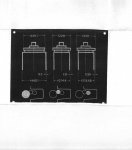TheProcessIStheproduct
Well-known member
Temp
Temp
Had this same problem about a week ago, messed with all the usual fixes most of which have been offered up in this post, but the one an only thing that fixed it was changing pad filters on royse and blowing out the coils and coming down from 55 to 52 on the set point, next day NO picture framing, NO edge tinting, and water was down 20%, I would not have believed temp had that much to do with it, but 100% improvement...
Temp
Had this same problem about a week ago, messed with all the usual fixes most of which have been offered up in this post, but the one an only thing that fixed it was changing pad filters on royse and blowing out the coils and coming down from 55 to 52 on the set point, next day NO picture framing, NO edge tinting, and water was down 20%, I would not have believed temp had that much to do with it, but 100% improvement...














